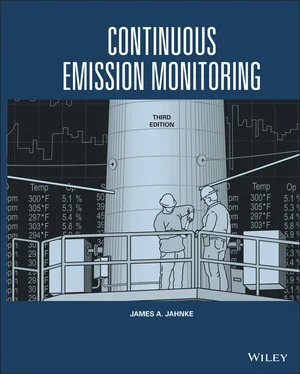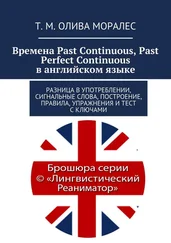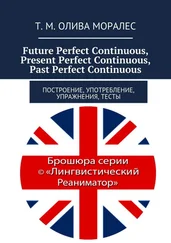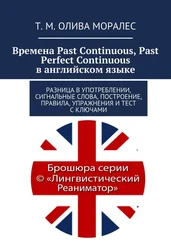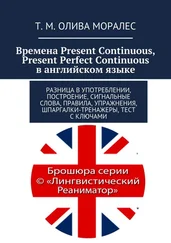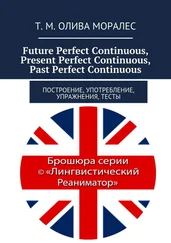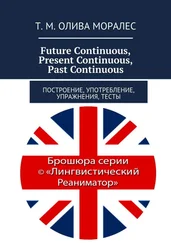James A. Jahnke - Continuous Emission Monitoring
Здесь есть возможность читать онлайн «James A. Jahnke - Continuous Emission Monitoring» — ознакомительный отрывок электронной книги совершенно бесплатно, а после прочтения отрывка купить полную версию. В некоторых случаях можно слушать аудио, скачать через торрент в формате fb2 и присутствует краткое содержание. Жанр: unrecognised, на английском языке. Описание произведения, (предисловие) а так же отзывы посетителей доступны на портале библиотеки ЛибКат.
- Название:Continuous Emission Monitoring
- Автор:
- Жанр:
- Год:неизвестен
- ISBN:нет данных
- Рейтинг книги:4 / 5. Голосов: 1
-
Избранное:Добавить в избранное
- Отзывы:
-
Ваша оценка:
- 80
- 1
- 2
- 3
- 4
- 5
Continuous Emission Monitoring: краткое содержание, описание и аннотация
Предлагаем к чтению аннотацию, описание, краткое содержание или предисловие (зависит от того, что написал сам автор книги «Continuous Emission Monitoring»). Если вы не нашли необходимую информацию о книге — напишите в комментариях, мы постараемся отыскать её.
The new edition of the only single-volume reference on both the regulatory and technical aspects of U.S. and international continuous emission monitoring (CEM) systems Continuous Emission Monitoring
Continuous Emission Monitoring:
Continuous Emission Monitoring, Third Edition
Continuous Emission Monitoring — читать онлайн ознакомительный отрывок
Ниже представлен текст книги, разбитый по страницам. Система сохранения места последней прочитанной страницы, позволяет с удобством читать онлайн бесплатно книгу «Continuous Emission Monitoring», без необходимости каждый раз заново искать на чём Вы остановились. Поставьте закладку, и сможете в любой момент перейти на страницу, на которой закончили чтение.
Интервал:
Закладка:
bNSPS applies if modification or reconstruction commenced after this date.
cCEM requirements are as applicable when meeting the conditions of the subpart.
dRule applies if constructed before this date
eOrganic monitoring device based on IP, photoionization, or thermal conductivity.
Not listed in the table are operational units or smaller sources that instead of installing CEM systems may alternatively be required to monitor process parameters such as pressure drops, temperatures, or fuel flow rates. Regulatory relief is applied to smaller sources where it can be a burden to purchase, operate, and maintain a CEM system. Here, the less stringent parameter monitoring requirements for low‐emitting sources may not be especially significant when considering their relatively smaller contribution to the atmospheric pollution burden.
The subparts tend to be complex. Accordingly, they should be referred to for detailed information concerning units of the emissions standards, monitoring requirements, reporting requirements, and exceptions.
General Provisions for the NSPS Subparts
General provisions pertinent to CEM systems required for sources regulated under the NSPS subparts are present in four sections of Part 60 of the Code. These sections are as follows:
§60.7 Notification and Recordkeeping
§60.8 Performance Tests
§60.11 Compliance with Standards and Maintenance Requirements
§60.13 Monitoring Requirements
Each of these sections gives important requirements regarding the opacity and gas monitoring systems mandated for source categories addressed by the subparts. These should be read in tandem with the subparts. For example, §60.7 gives requirements for Part 60 sources with installed CEM systems to submit excess emission reports and describes the information that is to be included in the report. In §60.8, requirements are given for conducting performance tests to determine whether the facility is within its compliance limits. Here, the performance tests conducted are those reference test methods of 40 CFR 60 Appendix Aspecified for the source category (e.g. acid plant, electric utility) (U.S. EPA 2020c).
Section 60.11 incorporates a requirement that has been central to U.S. EPA stationary source regulatory policy. This requirement [§60.11(d)] states:
At all times, including periods of startup, shutdown, and malfunction, owners and operators shall, to the extent practicable, maintain and operate any affected facility including associated air pollution control equipment in a manner consistent with good air pollution control practice for minimizing emissions. Determination of whether acceptable operating and maintenance procedures are being used will be based on information available to the Administrator which may include but is not limited to, monitoring results, opacity observations, review of operating and maintenance procedures, and inspection of the source.
This policy, formulated in the early 1970s, is reprised in the compliance assurance monitoring and credible evidence rules that resulted from congressional concerns addressed in the 1990 Clean Air Act Amendments (which is discussed below).
Section 60.13 incorporates important requirements for Part 60 CEM systems. This section is sometimes forgotten after a CEM program has been implemented, but nevertheless, contains essential program requirements. Among these requirements are given as follows:
Performance Specification Tests. Part 60 installed systems must show that they meet performance specifications of 40 CFR 60 Appendix B(U.S. EPA 2020d) by conducting a performance specification test (Note: “performance specification tests” are used to certify CEM systems and are not the same as the “performance tests” of §60.8 conducted to determine source compliance with emission limits).
Quality Assurance Requirements. In the absence of other quality assurance requirements, as a minimum; the system must conduct a zero and span drift check once every 24 hours, zero and span adjustments must be made if the drift exceeds twice the value of the drift performance specification of Appendix B, and the zero and span check procedures must be written.
Representativeness. All CEM systems are to be installed such that measurements representative of actual emissions are obtained.
Alternative Performance Test Requirements. An alternative to conducting reference method tests for determining relative accuracy may be requested if the pollutant emissions are less than 50% of the emissions limit (60.13(j)(1)). When applicable, this allows conducting a cylinder gas test (audit) (CGA) instead of a relative accuracy test audit (RATA).
NESHAP, 40 CFR 61
The National Emission Standards for Hazardous Air Pollutants (NESHAP), formerly legislated under Section 112 of the Clean Air Act, require continuous monitoring for a limited number of sources covered under Part 61 of Title 40. As in Part 60, general monitoring instructions regarding notification, recordkeeping, etc. are given in the “general provisions” prior to the source requirements. Few pollutants were regulated under the NESHAP program due to uncertainties associated with risk assessments and scheduling mandates (Mohin 1992). Source categories affected by this subpart and monitoring requirements are discussed further in Chapter 13on monitoring hazardous air pollutants.
The Air Toxics Program, 40 CFR 63
Title III of the 1990 Clean Air Amendments replaced the previous NESHAP program. Title III identified 189 hazardous air pollutants (HAPs) (later reduced to 187), to be regulated for sources emitting more than 10 tons/year of any one listed pollutant or 25 tons/year of a combination of listed pollutants. EPA has promulgated emission limits and engineering standards for the principal sources emitting HAPS (or “air toxics”). The sources must apply “maximum achievable control technology,” where MACT technology is the best control achieved in practice by 12% of the best controlled similar sources. However, MACT encourages process changes or other pollution prevention activities rather than the application of control equipment.
The air toxics, or “MACT standards,” also incorporate monitoring requirements to determine, on a continuous basis, whether emission limits are being met. Most MACT standards require parameter monitoring, in other words a “continuous parameter monitoring system (CPMS)” that is described in a “monitoring plan,” rather than the installation of CEM systems. However, where control devices are used that can be effectively monitored, such as carbon adsorbers and incinerators, CEM systems are either required or suggested as an alternative to parameter monitoring. The Part 63 Subparts give the emissions standards and monitoring requirements for HAPs emitted from 174 listed industries. Rather than requiring the monitoring of specific pollutants from the list of 187 HAPs, the use of surrogate analyzers is often allowed (such as a particulate monitor to monitor metal emissions or a total hydrocarbon monitor rather than a speciating instrument). Sources required to monitor HAPs and methods used to measure them are discussed further in Chapter 13.
Compliance Assurance Monitoring (CAM) 40 CFR 64
The compliance assurance monitoring program (CAM) was initiated from a congressional requirement included in the 1990 Clean Air Act Amendments (§702 (b) of the amendments). This amendment to Section 114 of the Clean Air Act states:
The Administrator shall in the case of any person which is the owner or operator of a major stationary source, and may in the case of any other person, require enhanced monitoring and submission of compliance certifications. Compliance certifications shall include (A) identification of the applicable requirement that is the basis of the certification, (B) the method used for determining the compliance status of the source, (C) the compliance status of the source, (D) whether compliance is continuous or intermittent, (E) other such facts as the administrator may require.
Читать дальшеИнтервал:
Закладка:
Похожие книги на «Continuous Emission Monitoring»
Представляем Вашему вниманию похожие книги на «Continuous Emission Monitoring» списком для выбора. Мы отобрали схожую по названию и смыслу литературу в надежде предоставить читателям больше вариантов отыскать новые, интересные, ещё непрочитанные произведения.
Обсуждение, отзывы о книге «Continuous Emission Monitoring» и просто собственные мнения читателей. Оставьте ваши комментарии, напишите, что Вы думаете о произведении, его смысле или главных героях. Укажите что конкретно понравилось, а что нет, и почему Вы так считаете.
